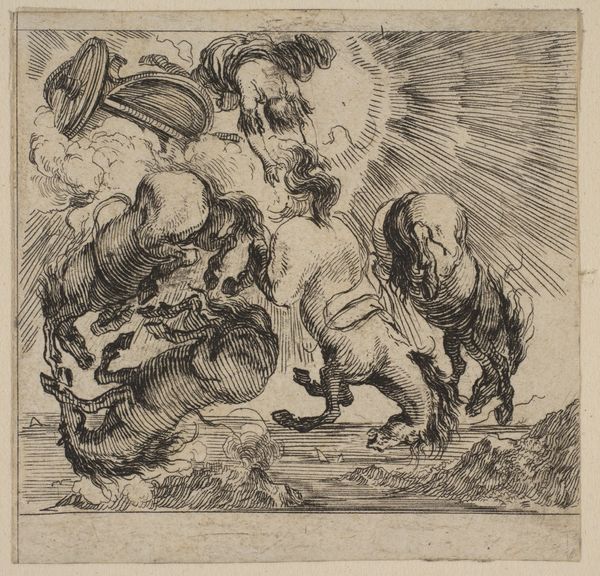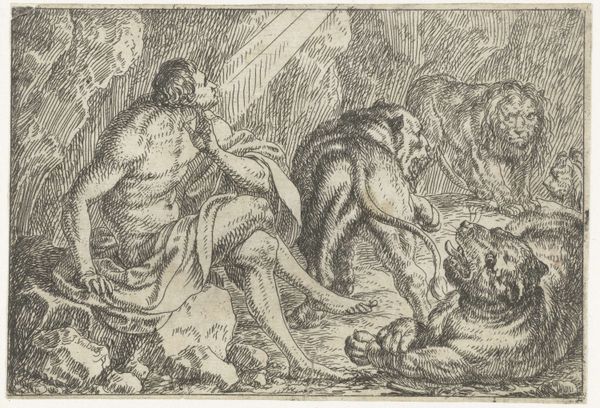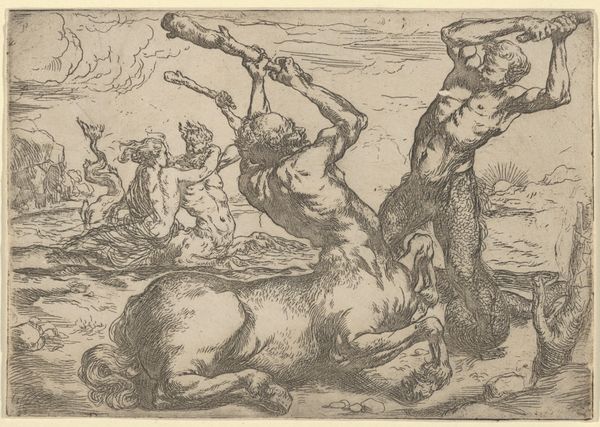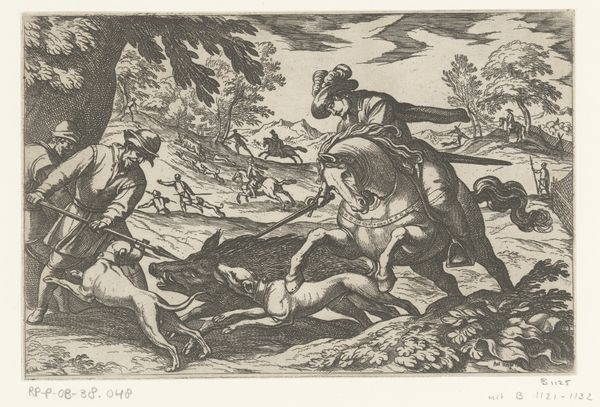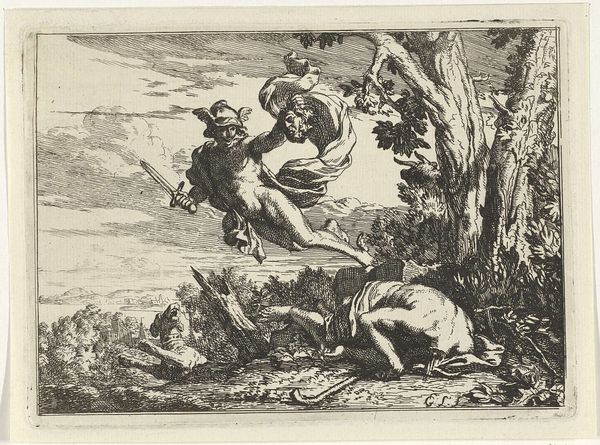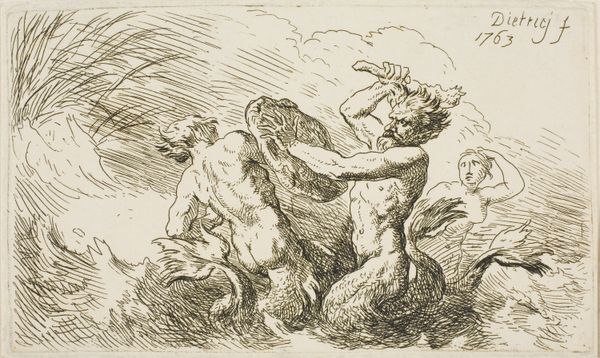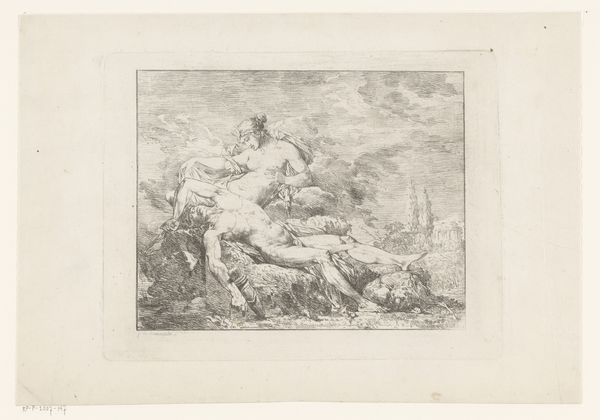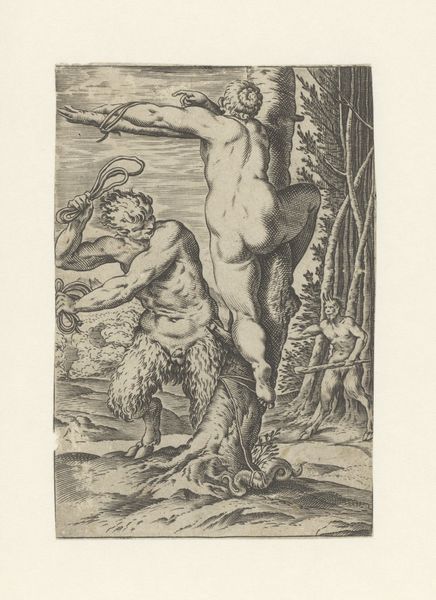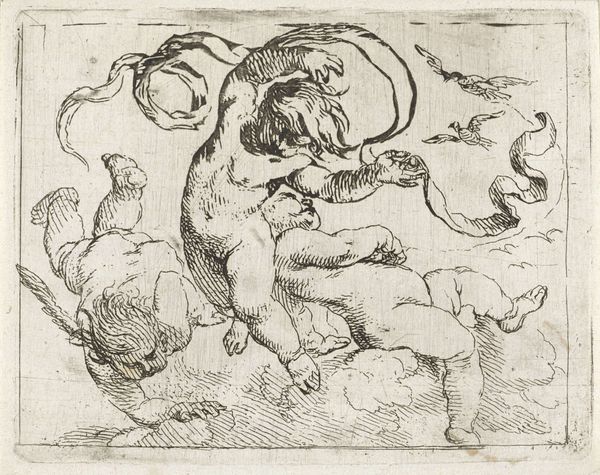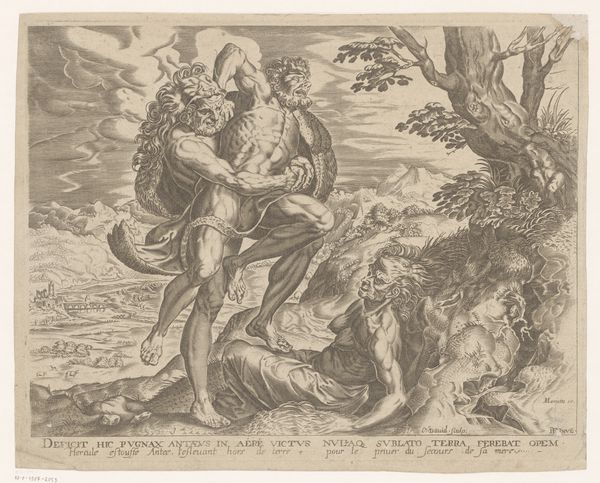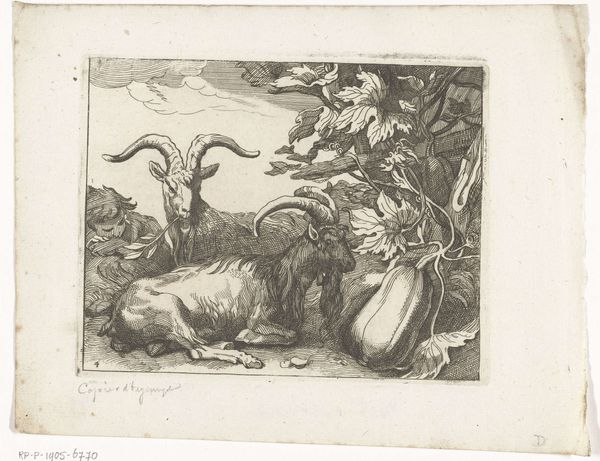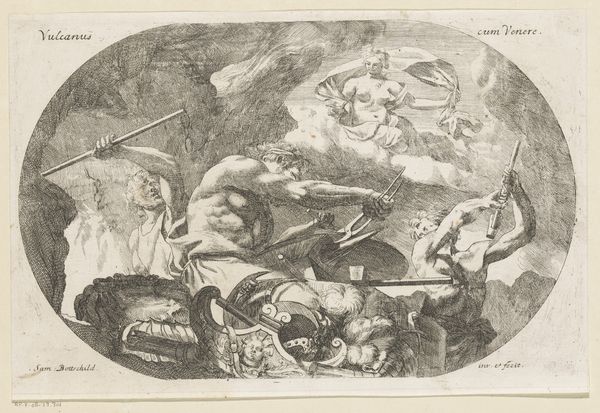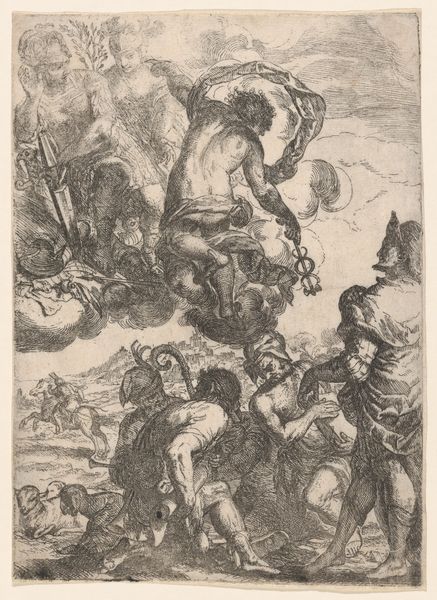
drawing, ink, pen
#
action-painting
#
drawing
#
narrative-art
#
landscape
#
figuration
#
ink
#
pen-ink sketch
#
sketchbook drawing
#
pen
#
history-painting
Dimensions: height 367 mm, width 470 mm
Copyright: Rijks Museum: Open Domain
Editor: This is "Gevecht tussen twee ruiters," or "Fight between Two Riders," by Georges d'Espagnat, created sometime between 1895 and 1930, using pen and ink. It's quite dynamic, with a real sense of movement captured in the sketch. How do you interpret this work from a formalist perspective? Curator: Note the dominance of line. D'Espagnat uses a flurry of hatching and cross-hatching to build form and create a sense of chaotic energy. Consider how the density of these lines defines the dark, rearing horse on the left, contrasting with the lighter, almost frantic lines that describe the horse and rider on the right. The composition itself is quite compressed, pushing the figures forward and intensifying the drama. Editor: Yes, the contrast between the two sides is striking. But does the sketch-like quality suggest a lack of finish, or does it contribute something essential to the overall impact? Curator: Precisely. The lack of finish is not a deficit but rather a deliberate choice. The raw, immediate quality of the lines amplifies the sense of action and urgency. Consider, too, the absence of color; the stark black and white emphasizes the interplay of light and shadow, heightening the emotional intensity. Are we drawn into the narrative, or do we see merely the structural components? Editor: I see your point; it is less about the story and more about the dynamic interplay of lines and forms, all contained in this shallow visual space. I was initially drawn to the depicted battle but now appreciate the work's construction more. Curator: Indeed. Through a close examination of its formal elements, we gain a deeper appreciation of how D'Espagnat conveys such a potent sense of conflict and movement within such a simple medium.
Comments
No comments
Be the first to comment and join the conversation on the ultimate creative platform.
